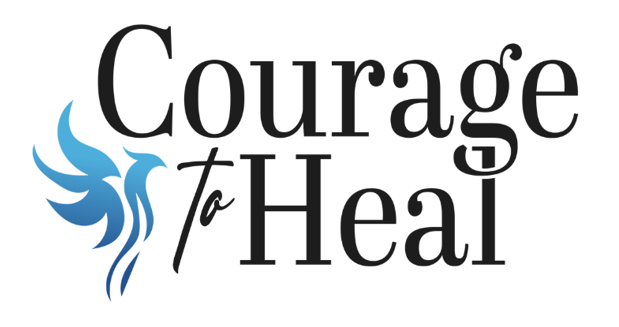Dispelling ADHD Myths: A Guide to Understanding ADHD
Have you ever felt the sting of being misunderstood? Maybe you’ve heard the whispers – "lazy," "unmotivated," "scatterbrained" – words tossed around carelessly, missing the heart of the struggle.
Living with ADHD, or Attention Deficit Hyperactivity Disorder, can often feel like walking through a world built for a different kind of brain, while myths and misconceptions weigh heavy on already burdened shoulders.
Today, we’re gently pulling back the curtain on some of the most persistent ADHD myths. Not to shame or scold but to bring clarity, compassion, and a soft place to land.
If you’ve ever questioned your experiences or felt isolated by misunderstanding, you’re not alone.
Let’s explore this together.
Myth 1: ADHD Is Just Being Lazy And Disorganized.
It’s a myth about ADHD that’s been stitched into the fabric of misunderstanding: that ADHD is simply a character flaw – laziness, disorganization, or an unwillingness to "try harder." But ADHD is a real, biologically rooted condition.
Brain imaging studies reveal profound structural and functional differences in the brains of individuals with ADHD. These include variations in the prefrontal cortex – the area responsible for focus, decision-making, and impulse control – as well as disrupted patterns in neural connectivity and reduced blood flow.
These differences aren’t just interesting facts; they’re the unseen hurdles that can make even "simple" tasks feel insurmountable.
When someone with ADHD struggles to initiate or complete mundane or repetitive tasks, it’s not due to a lack of desire or importance. In fact, they often deeply want to succeed. Their brains, however, find it immensely difficult to maintain the required focus and effort unless the situation becomes urgent, such as facing an imminent deadline.
Compassionate truth: ADHD is not a reflection of laziness or carelessness. It’s a medical condition deserving of understanding, support, and tailored strategies.
Myth 2: ADHD Isn’t Serious; It Can’t Really Damage Your Life
Another harmful misconception is the idea that ADHD is a minor inconvenience, something that causes a little forgetfulness but doesn’t have serious life consequences. The reality is more complex and more tender.
Untreated or under-treated ADHD can touch every aspect of a person’s life: academics, careers, relationships, self-esteem, and mental health.
Studies show that ADHD is linked to lower educational attainment, employment instability, increased rates of divorce, issues with the criminal justice system, and even a higher risk of traffic accidents.
When struggles accumulate without understanding or support, the result can be a quiet erosion of confidence and belonging. Many with ADHD carry a deep, unspoken grief, mourning the gap between their potential and what’s been accessible to them.
Grounding truth: ADHD can impact life significantly, but with the right support, healing, and strategies, individuals can find pathways to fulfillment and stability.
Myth 3: ADHD Means Being Hyperactive
Pop culture paints ADHD with a single, noisy brush – the image of the restless, fidgety child bouncing off the walls. But ADHD wears many faces.
There are three subtypes of ADHD:
Hyperactive-Impulsive,
Inattentive, and
Combined.
Inattentive ADHD, often more common in girls and women, is characterized not by hyperactivity but by difficulties in sustaining attention, staying organized, and following through on tasks.
This quieter presentation can easily be overlooked, leading many to internalize blame and shame.
Healing truth: ADHD doesn’t always involve hyperactivity. Understanding the diverse expressions of ADHD helps dismantle harmful stereotypes and opens the door for more nuanced support.
Myth 4: We’re All “A Little ADHD”
It’s common to hear, "Everyone’s a little ADHD sometimes," especially when talking about forgetfulness or distractions. While it’s true that everyone experiences lapses in attention occasionally, equating everyday forgetfulness with ADHD minimizes the profound and persistent struggles individuals face.
For a diagnosis of ADHD, symptoms must be pervasive, consistent, and interfere significantly with daily functioning.
These aren’t fleeting moments; they’re enduring patterns often rooted in measurable brain differences and neurotransmitter imbalances.
Sobering truth: ADHD is a serious, diagnosable condition. It's estimated to affect about 6% of adults in the U.S., deserving of understanding, not minimization.
Myth 5: You Can Outgrow ADHD
Many hold onto the idea that ADHD is a childhood disorder – something you "grow out of" as maturity sets in. But ADHD is now understood as a lifespan disorder.
In adulthood, the symptoms of ADHD don’t disappear; they often evolve. Increased complexity of adult life – careers, relationships, financial responsibilities – can make ADHD even more pronounced.
For many, the coping systems that helped in youth (parental supervision, structured schedules) fade, leaving struggles more exposed.
Reassuring truth: While symptoms may change over time, ADHD doesn’t simply vanish. Awareness and support can empower individuals to navigate adult life with resilience.
Myth 6: You Can’t Have ADHD If You’re Intelligent Or Hardworking
A stubborn ADHD myth suggests that intelligence or grit should "cancel out" ADHD symptoms. Yet, ADHD cuts across all IQ levels. Being bright or hardworking doesn’t shield someone from the difficulties of organization, time management, or emotional regulation.
Moreover, intelligence can sometimes mask ADHD.
Highly intelligent individuals may develop compensatory strategies, but these can falter under increased pressure – leading to exhaustion, burnout, and deep frustration.
Empowering truth: ADHD and intelligence are independent of one another. Struggling doesn’t negate your intelligence, and support isn’t a sign of weakness, it’s a pathway to thriving.
Myth 7: ADHD Is Just A Boy’s Disorder
Historically, ADHD has been stereotyped as a "boy’s disorder," often because hyperactive symptoms are more visible and disruptive. However, many girls and women have ADHD, often presenting with the inattentive subtype.
In fact, recent research shows that ADHD in adult women may even be underdiagnosed, with as many as 75% of women with ADHD not receiving the proper diagnosis.
The number of women diagnosed with ADHD nearly doubled between 2020 and 2022 as awareness grows. Many women spend years – sometimes decades – struggling silently before receiving a diagnosis.
If you want to learn more about ADHD in women, check out my extensive article on it.
Validating truth: ADHD does not discriminate by gender. Recognizing the diverse presentations helps create space for women and girls to be seen and supported.
Myth 8: If You Weren’t Diagnosed In Childhood, You Can’t Have ADHD
Some believe that a lack of childhood diagnosis rules out adult ADHD. In reality, the criteria require that symptoms be present before age 12 but not necessarily diagnosed.
Many children with ADHD go unnoticed because their symptoms were mistaken for laziness or poor motivation. It’s often in adolescence or adulthood – when life demands grow more complex – that ADHD becomes more apparent.
Gentle truth: A late diagnosis doesn’t invalidate the very real struggles experienced throughout life. Awareness at any age is a doorway to understanding and healing.
Myth 9: People With ADHD Can Never Focus On Anything
Here’s a tender paradox: those with ADHD often experience hyperfocus: an intense, almost trance-like concentration on tasks that are highly interesting or stimulating.
But sustaining attention on mundane, repetitive, or effortful tasks can feel like trying to swim upstream. It’s not a matter of not caring; it’s how the ADHD brain allocates attention.
Hopeful truth: Focus in ADHD isn’t absent; it’s inconsistent. With support, individuals can learn to work with their focus patterns rather than against them.
Myth 10: If You Have Anxiety, Depression, Or A Learning Disability, You Can’t Also Have ADHD
ADHD rarely travels alone. It often co-occurs with other conditions like anxiety, depression, learning disabilities, or autism spectrum disorders. Research shows that individuals with ADHD are six times more likely to have a co-occurring psychiatric or learning disorder.
Unfortunately, overlapping symptoms can make diagnosis and treatment more complex. It’s not uncommon for ADHD to be masked by or mistaken for another condition.
Autism spectrum disorders frequently occur alongside ADHD.
Research has shown that 41% of children with autism had suspected ADHD. In addition, 22% of those with ADHD also had signs suggesting they suffered from an autistic spectrum disorder.
Validating truth: It’s entirely possible to have ADHD alongside other mental health or learning challenges. Comprehensive, compassionate care can address the whole person.
Myth 11: ADHD Is Only About A Lack Of Focus And Concentration
It’s easy to think of ADHD as simply a challenge with attention: a brain that can’t stay on track, a mind that wanders. But that’s only part of the story, and a narrow one at that.
For many individuals living with ADHD, the real struggle isn’t just about staying focused – it’s about managing emotions. In fact, a significant number of people with ADHD experience what’s known as emotional dysregulation: the difficulty, or sometimes inability, to regulate and respond to emotions in a healthy, adaptive way.
Emotional dysregulation doesn’t just mean feeling things deeply – it means emotions can come on fast and strong, sometimes lingering longer than expected, and are often hard to soothe.
You might find yourself reacting impulsively, struggling to calm down after becoming upset, or feeling overwhelmed by stress that others seem to manage with ease.
Stark truth: Research suggests that anywhere from 34% to 70% of adults with ADHD experience significant difficulties with emotional regulation. Similar patterns have been observed in children as well. This isn’t a rare side effect – it’s a core part of how ADHD can show up in daily life.
The impact is real and wide-reaching. Emotional dysregulation can strain relationships, complicate academic or career success, and take a toll on overall mental health.
It’s one of the reasons why ADHD isn’t just about focus – it’s about how a person experiences the world, responds to it, and finds ways to navigate its emotional ups and downs.
Myth 12: People With ADHD Shouldn’t Take Stimulant Medications
Another widespread ADHD myth is that stimulants “add fuel to the fire.” In truth, stimulants are among the most thoroughly researched treatments for ADHD.
Stimulants work by boosting dopamine – a key neurotransmitter involved in motivation, attention, and reward pathways – in parts of the brain that are underactive in ADHD.
With thoughtful management, 80-90% of people with ADHD benefit from medication. Like any treatment, it’s about finding the right balance for the individual.
Grounded truth: Medication can be a valuable, life-enhancing tool for many living with ADHD. Personal choice and professional guidance pave the way.
In Conclusion
ADHD myths have a way of weaving themselves into our collective consciousness, often leaving those living with ADHD feeling unseen, misunderstood, and isolated. But here’s the gentle, hopeful truth: understanding is the first step toward compassion – for yourself, and for those around you.
By untangling common myths about ADHD, we create space for deeper connection, better support, and more authentic living. Healing doesn’t happen through judgment; it happens through being seen and supported exactly as we are.
You are not alone in this. You’re not broken. You’re becoming – and with each myth we dismantle, there’s more room for your true self to shine through.
If you’re ready to learn more or need a hand to hold along the way, I’m here for you.
***
If you’re a woman who has been diagnosed with ADHD – or if you quietly wonder whether ADHD has been shaping your life – you’re not alone. I offer therapy that is tailored to the unique ways ADHD shows up in women’s lives, with warmth, understanding, and strategies that honor your experience. Visit my ADHD therapy page to learn more about how we can work together.






